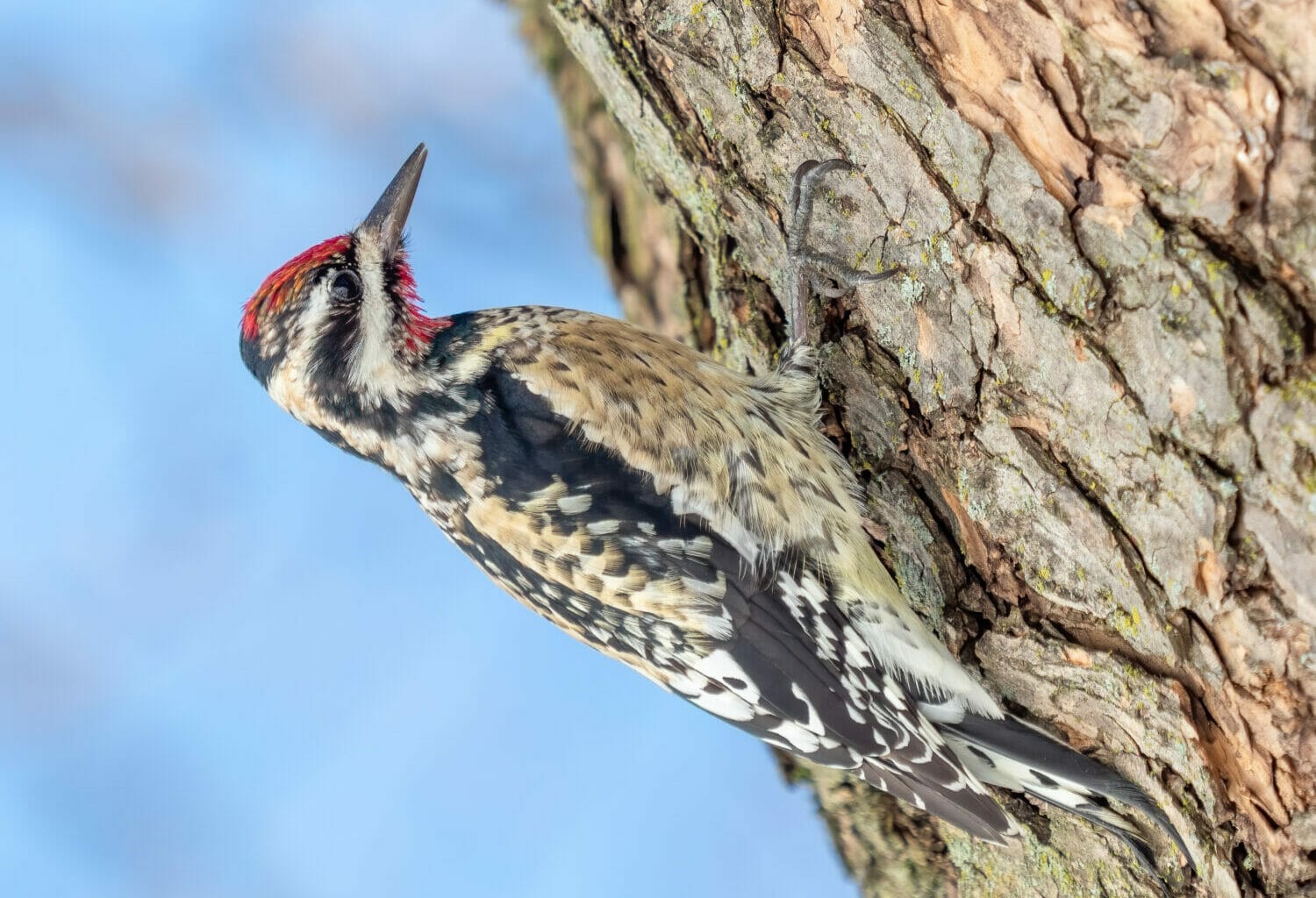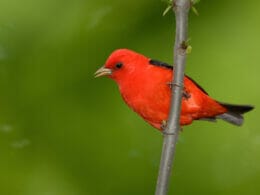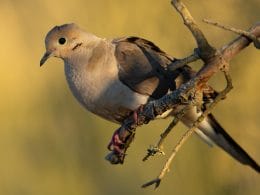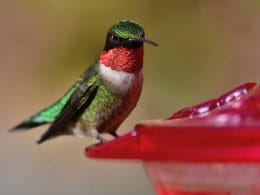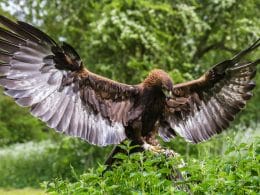We all love woodpeckers. There are so interesting and full of character. Their odd looks and unusual behavior make them an icon of our forest. But what happens if they are bashing the trees in your garden or keeping you up at night with their drumming? In this post we look at why woodpeckers do what they do and what you can do if you are worried they are harming your trees.
Types of Woodpecker
The family of Picidae is described as Woodpeckers and Allies. Interestingly, the ABA (American Birding Association) includes the following in this family:
- Eurasian Wryneck
- 18 species of woodpecker
- 2 species of flicker
- 4 species of sapsucker
When I saw these inclusions I wondered what the wryneck was doing there. Let’s look a little closer at these family members.
Eurasian Wryneck (Jynx torquilla)
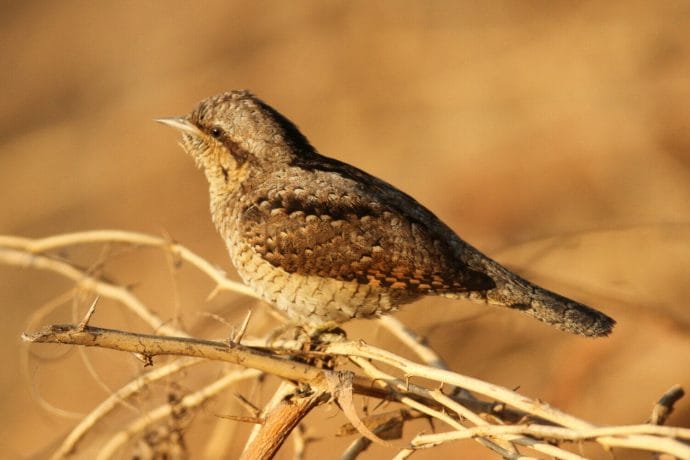
This is a very odd woodpecker (and that says something in a class of odd birds!). It is gray brown with a dark stripe through the eye and down the neck. It doesn’t tend to peck as the other woodpeckers do, favoring searching for food with its tongue.
There have only been a handful of reported sightings to eBird of the Eurasian Wryneck in the far west of Alaska. Hence, we will discount this bird from our investigation.
Woodpecker Species
Woodpecker species resident in the United States include the large Pileated and tiny Downy, the common Hairy and very rare (probably extinct) Ivory-billed Woodpeckers. They are an eclectic bunch. Here are a few of them.
American Three-toed Woodpecker (Picoides dorsalis)

This woodpecker has intricate black and white patterning topped off with a golden crown. It can be found in northern areas of the east, through southern and western Canada, in the mid-west and then along the Pacific northwest into southern Alaska.
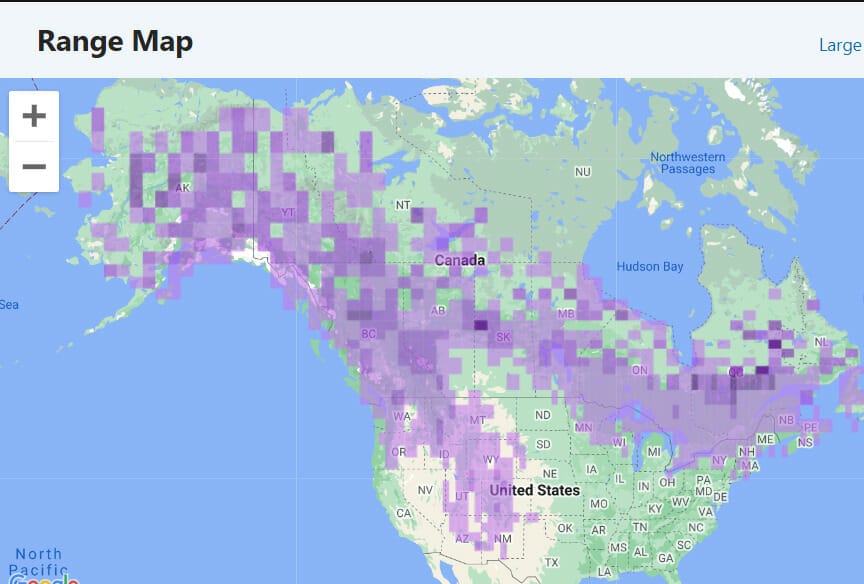
The American Three-toed Woodpecker pulls bark off the tree to look for bugs and grubs. Below is an example of its drumming call.
Downy Woodpecker (Dryobates pubescens)
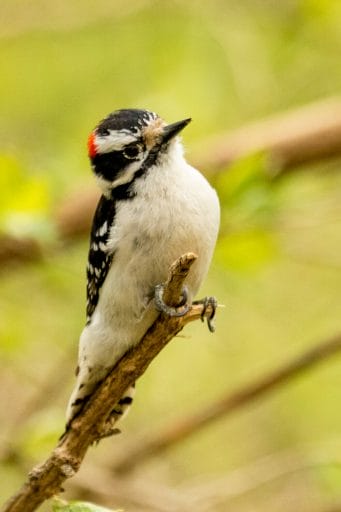
The Downy Woodpecker is very pale on the front with black and white patterning on the back, with a broad white streak down it. The red crown is present on both sexes although sometimes difficult to see on the females. It can be found across the continental United States, Canada and in parts of southern Alaska.

The Downy Woodpecker has a chirruping call not unlike a House Sparrow. It’s drumming call is rather gentle and soft. Here is a sample:
Red-headed Woodpecker (Melanerpes erythrocephalus)
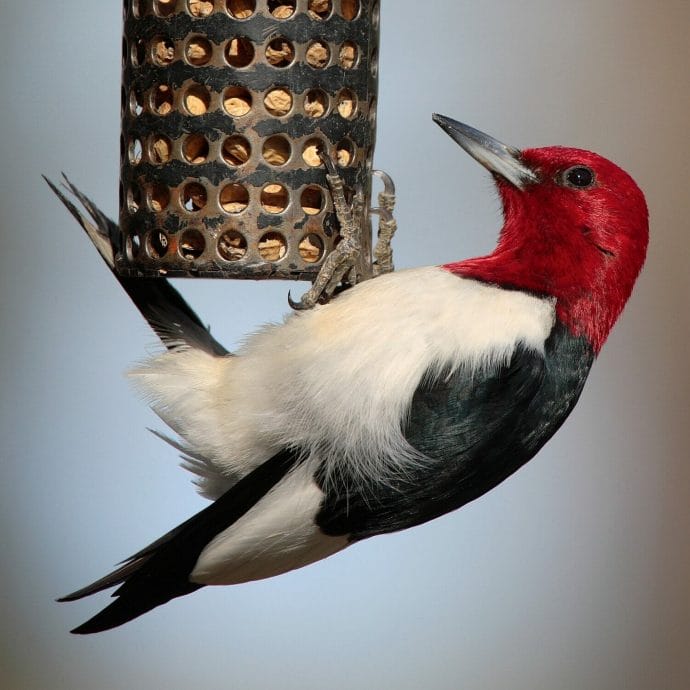
The Red-headed Woodpecker is possibly the most attractive of the family. The plain black and white patches are spectacularly offset by the bright crimson head. It can be found extensively across the eastern and central parts of continental America.

The call of the Red-headed Woodpecker is a harsh screech but it also drums. Example of both is below.
Flicker Species
For an unusual bunch of birds, the flickers are probably the most un-woodpecker like.
Northern Flicker (Colaptes auratus)
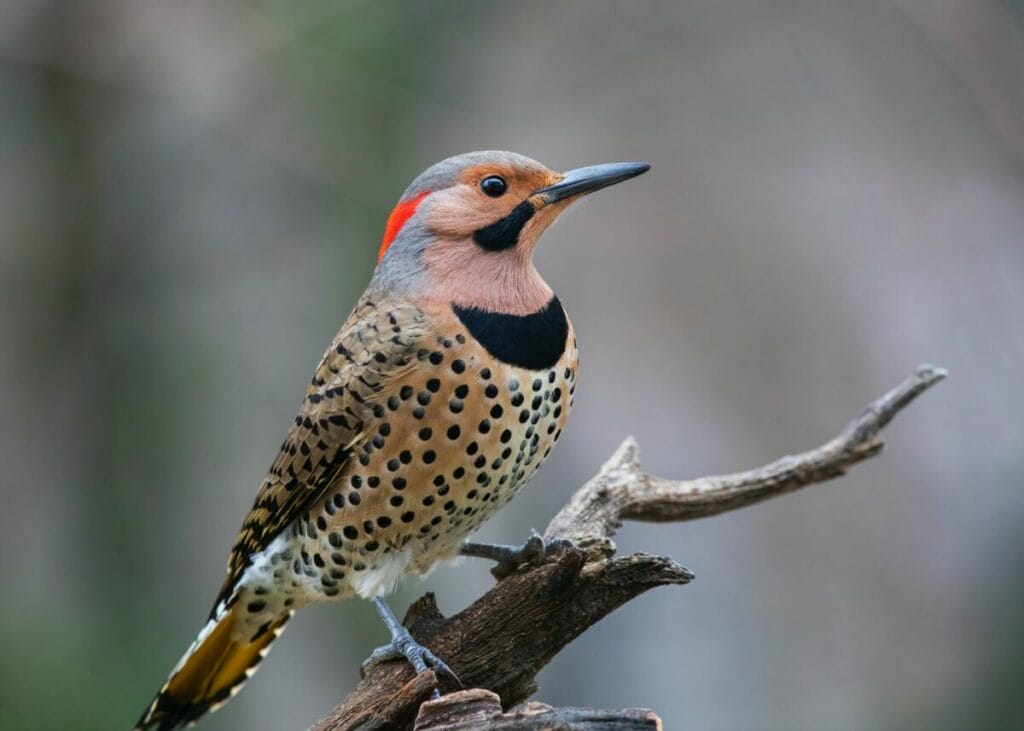
The Northern Flicker is a kaleidoscope of colors. It is largely buff and brown with black bars on the back and black spots on the front. A large black crescent marks the top of the breast with a cinnamon throat. The head is a mix of brown, grey, red and black. If can be found across the whole U.S. with concentrations in the Pacific north west.

Below is a recording of several birds bickering over a crop of fruit.
Sapsucker Species
Some of the sapsuckers look like woodpeckers and some of the woodpeckers look like sapsuckers. The difference is that the sapsuckers drill for sap while the woodpeckers hunt for ants and larvae. Here are a couple of sapsucker species.
Yellow-bellied Sapsucker
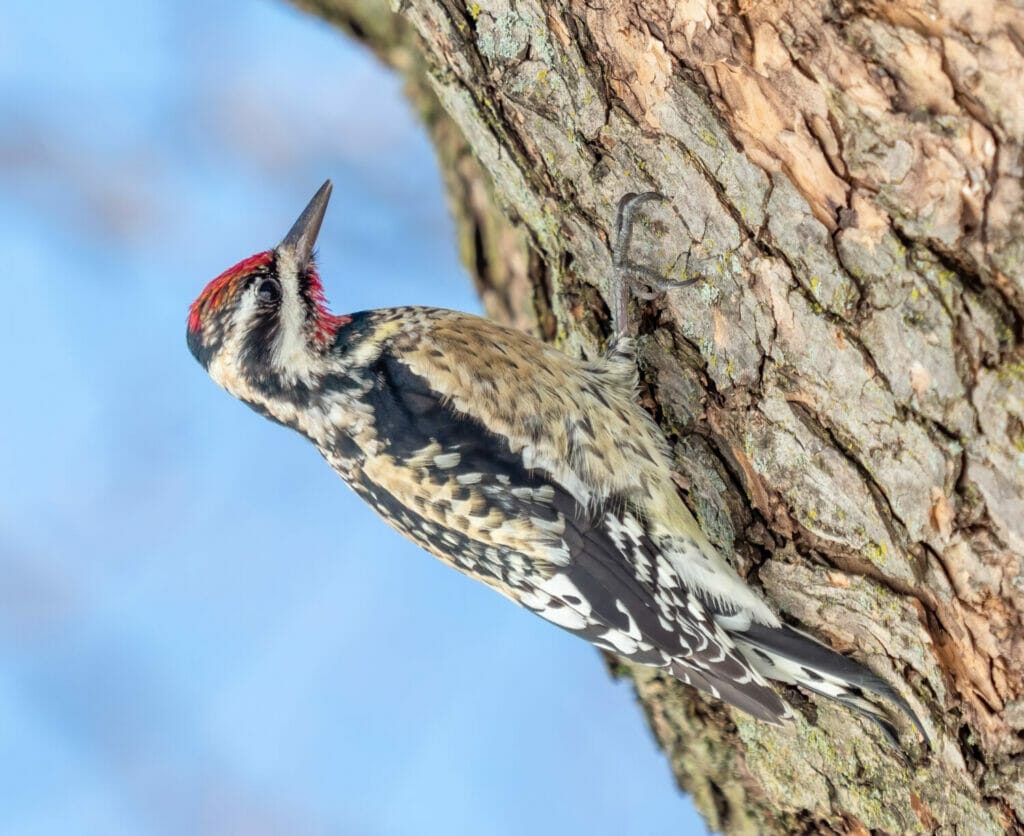
Looking a little like the Downy and Hairy Woodpeckers, this larger version has a deeper red crown and a throat patch to match. The pale belly and back stripe has a yellow wash. This woodpecker can be found across the U.S. with a gap in the mid-west. It is present in Canada and eastern Alaska.

This is a gorgeous recording of a mix of drumming, tapping and calling between presumably nesting pairs.
Red-breasted Sapsucker (Sphyrapicus ruber)

The Red-breasted Sapsucker is a darker bird with a gray wash on the breast and less white on the back. The red head partially extends down the throat and breast. It can be found on the west coast of the U.S. and into Alaska.
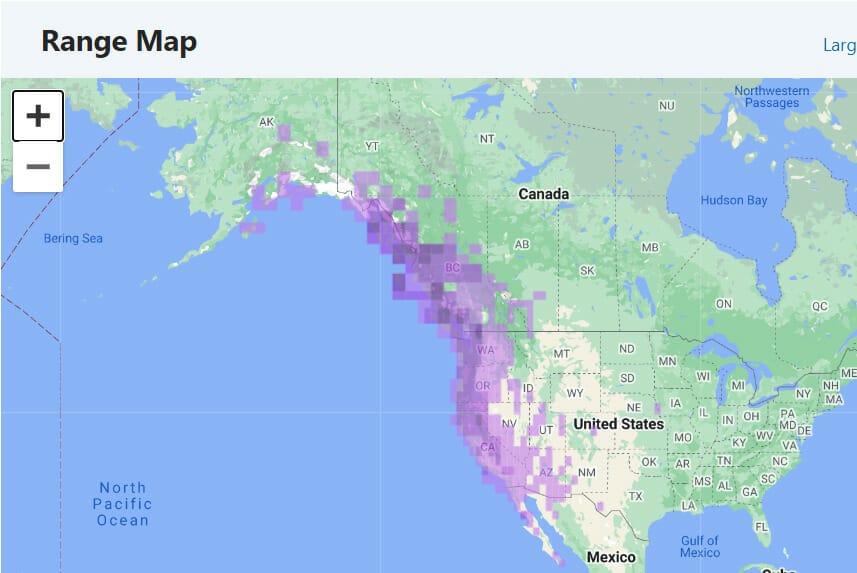
This is a recording of a bird calling and singing.
Woodpecker Sounds
As we have seen from the examples above, there are different calls and sounds that woodpeckers make. These include:
- Drumming
- Calling/courtship
- Singing
- Begging
- Flight calls
Undoubtedly, the loudest noise woodpeckers make is the drumming of their bill into bark. And the loudest species of all belongs to the biggest, the Pileated Woodpecker. Here is a reminder of how loud it is.
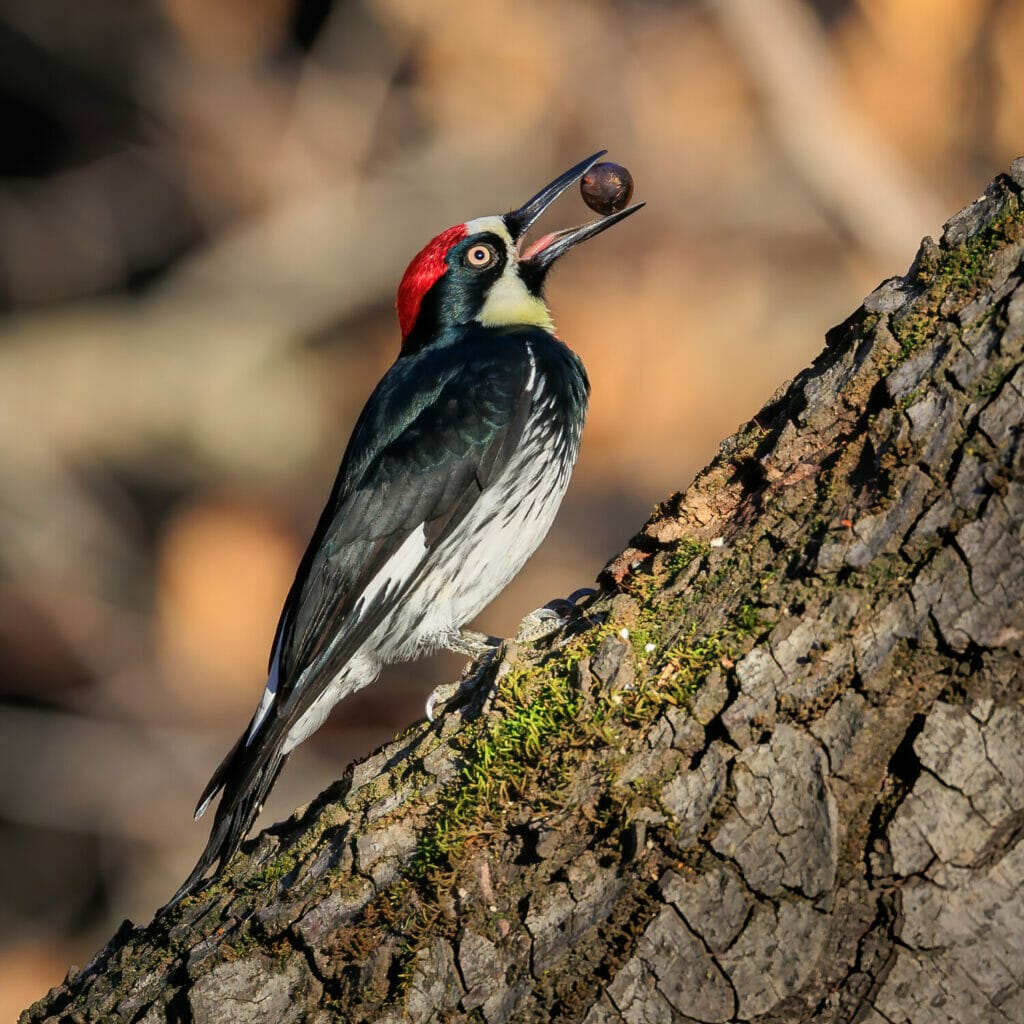
Why do Woodpeckers Drum?
As ever, there are simple priorities for all birds and the woodpeckers are no exception. They communicate through sounds and calls but the drumming is slightly different. They drum because:
- they are marking territory
- they are looking for food underneath bark
- they are excavating a nesting cavity
Do Woodpeckers Damage Trees?
It may seem that woodpeckers are bound to damage trees as they dig around the bark or excavate cavities. Generally however, woodpeckers do not damage the trees. This is because they usually live in mature forests with older, bigger trees that can cope with the disturbance.
In fact, woodpeckers play a vital role in maintaining the health of their forests. They are a vital part of the ecosystem as the cavities they create become vital refuges for a host of other mammals and birds.
How are Woodpeckers a Problem?
There are 2 reasons that woodpeckers may be annoying to human neighbors. Firstly and most obviously, the drumming noise can be incessant and persistent. Secondly, they may drum against wooden parts of your property.
If woodpeckers are in your garden, then that might be annoying enough but if they choose to drum on your house, then it may become a real problem. Lastly, if they are drumming on trees that are not large enough to cope, they may cause real damage or even kill the tree.

How to Deter Woodpeckers
There are several ways of ‘encouraging’ woodpeckers to go elsewhere. You should check first to see if there really is any damage to your trees. If the woodpecker is just looking for food within the bark, then it should be ok. If the woodpecker is persistent, then they may be excavating.
Deterrants include:
- Attach bird netting to affected trees.
- Buy a special sticky substance that when applied to trees, prevents woodpeckers from landing.
- Hang reflective items to distract the woodpeckers.
- Decoy predators may work temporarily.
- Loud noises. However, we don’t really recommend this as it will probably be more annoying than the woodpeckers!
- Fill excavated holes with a benign putty.
- Aromatic repellants.
Conclusion
Remember that it is against federal law to hurt or kill native birds like woodpeckers so all deterrents should never harm the birds. If it was me, I would pull up a chair, have a coffee and watch them!
We hope you have enjoyed reading about woodpeckers and we encourage you to appreciate their beauty. However, if they are banging away at your home, hopefully you now have some ideas to stop them.
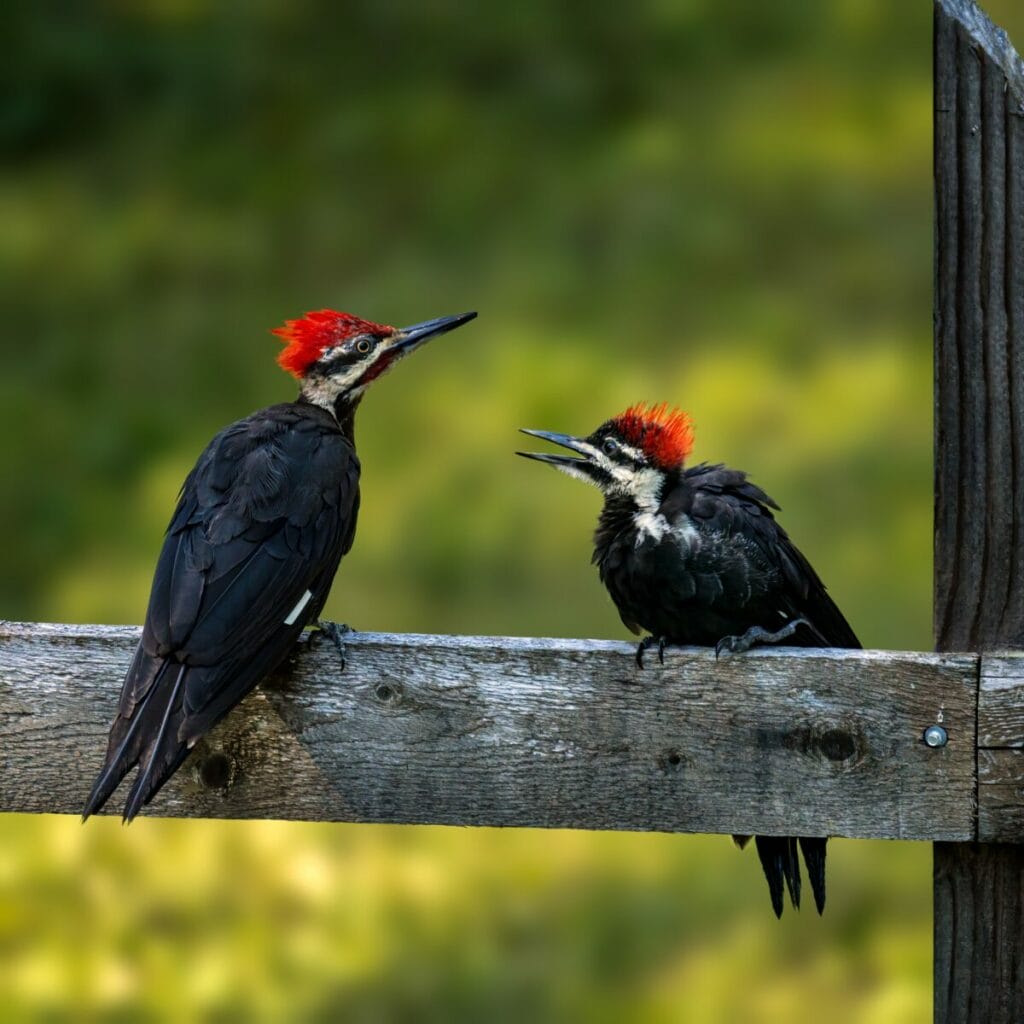
FAQ
Studies have shown that woodpeckers can peck at least 20 times a second.
Putting it in perspective, if you hammered your head against a wall at a tenth the power of the woodpecker then you would have a concussion!
It is actually normal paint with an additive that deters the woodpeckers by smell and taste.




